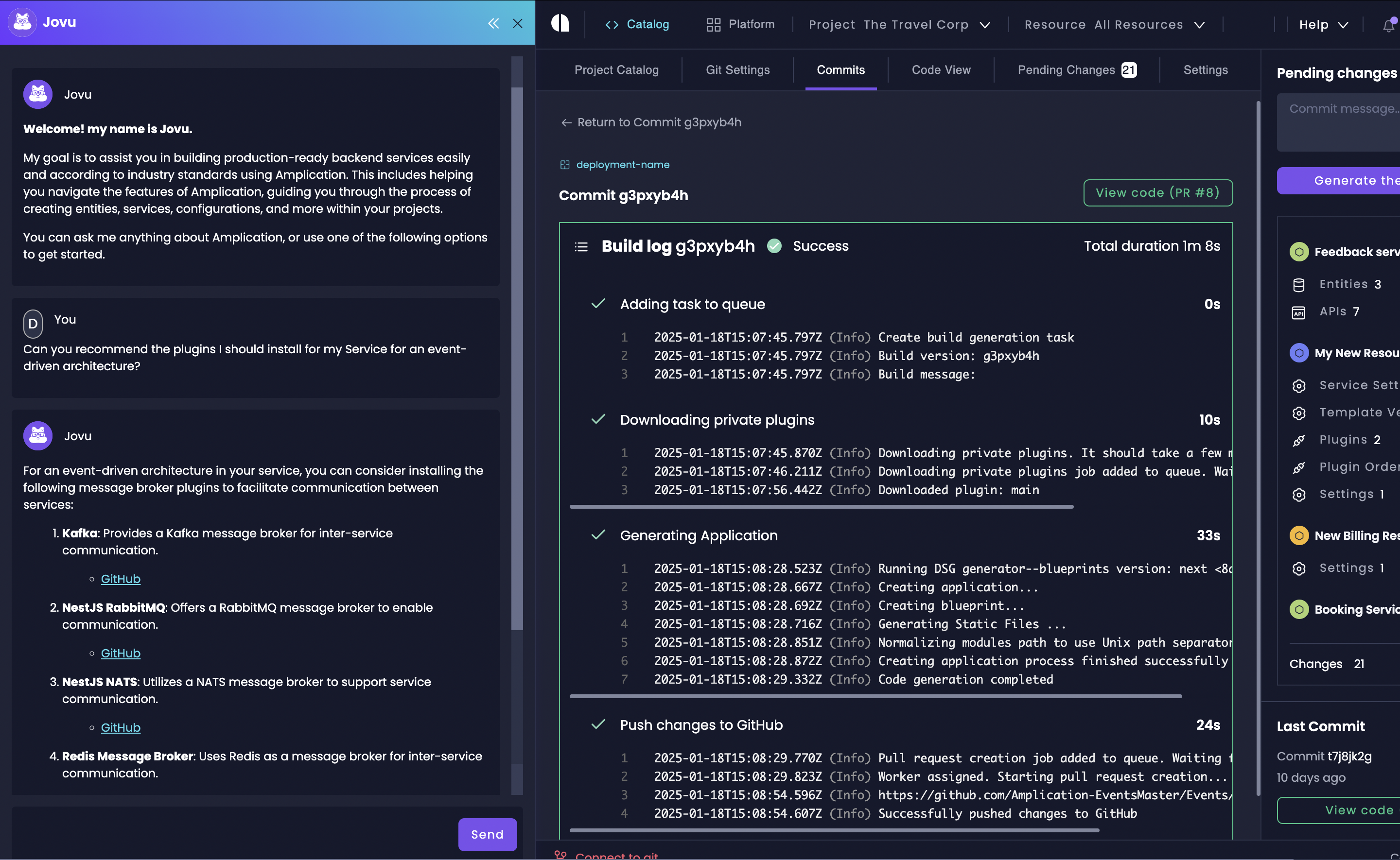
Why Day One Matters for Developer Velocity
Modern development teams need to move fast without compromising quality. Amplication’s Day One solutions address platform teams’ challenges:Eliminate Boilerplate
Generate 100% of your service foundations including databases, APIs, auth, CI/CD pipelines, and more.
Enforce Compliance
Bake security controls and architectural standards into every new service
AI-Powered Acceleration
Use natural language to create entities, relationships, and business logic using Jovu.
Multi-Cloud Ready
Generate services pre-configured for AWS, Azure, or GCP ecosystems with our plugins.
Core Day One Capabilities
Resource Scaffolding
Resource Scaffolding
Generate complete backend services in minutes with:
- Pre-configured foundations
- Auto-generated REST & GraphQL APIs
- Production-ready authentication
- Database-agnostic ORM layers
Data Modeling
Data Modeling
Visual entity relationship modeling with:
- AI-assisted schema creation
- Automatic migration scripts
- Field-level permissions
- Cross-service relationships
Schema Upload
Schema Upload
- Import existing database schemas
- Automatically generate entity models
- Map relationships and constraints
- Support for PostgreSQL, MySQL, MongoDB, and others
- Preserve existing database structure
Plugin Integration
Plugin Integration
- Install plugins from the public catalog
- Extend functionality with authentication providers
- Add custom business logic and workflows
- Implement organization-specific standards
- Use private plugins for internal use
CI/CD Integration
CI/CD Integration
Enterprise-grade Git workflows featuring:
- Automated PR generation
- Multi-repo strategies
- Audit-ready change tracking
AI Assistant
AI Assistant
Jovu AI Copilot capabilities:
- Natural language to code generation
- Architectural pattern suggestions
- Technical debt detection
- Context-aware documentation
Strategic Benefits for Development Teams
Focus on Business Logic
Developers spend a lot less time on infrastructure code vs business logic
Reduce Human Error
Eliminate configuration mistakes through standardized templates
Accelerate Onboarding
Deploy first PR in less than 24 hours using approved patterns
Enterprise Scalability
View and visualize many resources with their relations in a variety of different ways